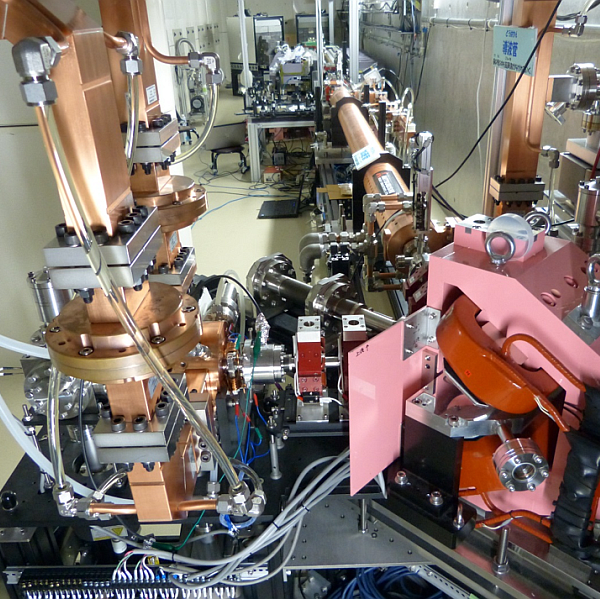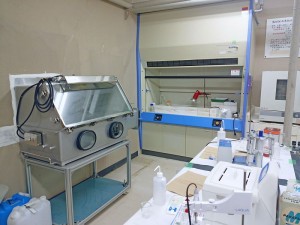Accelerator and Beam Physics
Non-linear beam dynamics in circular accelerators is studied by using the booster synchrotron (BST ring). Fundamental accelerator physics for generation of ultra-short electron bunch is also studied in the test accelerator facillity, t-ACTS, in which specially designed rf-gun is employed. Furthermore a high-brilliant THz light source employing this ultra-short electron bunch is also under development in terms of the peculiar sources, such as free electron laser (FEL), coherent THz undulator radiation and coherent Cherenkov radiation, etc.
Quark Nuclear Physics
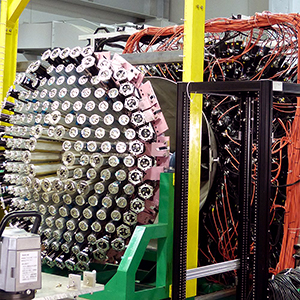
We investigate the structure and nature of hadrons, where quarks are confined, through the photoproduction experiments at ELPH and SPring-8. Both the ground and excited states of hadrons with u, d, and s quarks can be complementarily studied at the two facilities, which continuously cover the photon energy range from 0.6~GeV to 2.9~GeV. So far, a pentaquark candidate with hidden strangeness, "$N^*(1670)$", has been indicated by the η photoproduction experiments using the 4π electromagnetic calorimeter complex "FOREST" at ELPH. The high statistics data with FOREST also enables us to carry out the precise measurements of the meson-nucleon scattering length, the double meson photoproduction cross sections, etc. Another important issue in our experiments at ELPH and SPring-8 is the studies of the hadron mass generation, which is expected to be closely related with the nature of the QCD vacuum. The extremely high density property of the nucleus opens up the possibilities to observe the phase transition phenomenon of the QCD vacuum. For this purpose, we have also constructed the large acceptance electromagnetic calorimeter "BGOegg", consisting of 1320 BGO crystals. The experiments with BGOegg has started at SPring-8/LEPS2 in order to search for the $\eta^\prime$-mesic nuclei.
Radioactive-isotope Science
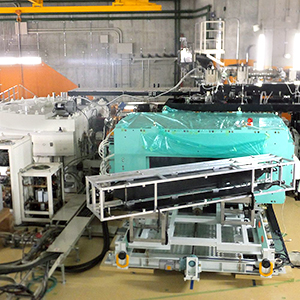
It has been revealed that nuclei far from stability have exotic structures such as halo, skin, magicity loss, and new magic numbers. Recently many scientific efforts for understanding unstable nuclear structures are being made over the world because it is a key issue of the nuclear physics and critical for understanding the nucleosynthesis. Electron scattering provides the most powerful and reliable information of the nuclear structure. Indeed, many stable nuclei have been investigated and our understanding of nuclear structures have been established by electron scattering experiments in the latter half of the 20th century. Although the actualization of electron scattering off unstable nuclei has been awaited, this method has not been applied for unstable nuclei because of the difficulty to prepare the target material made of unstable nuclei due to their short lives. We proposed a completely new target-forming technique, namely SCRIT (Self-Confining Radioactive isotope Ion Target) which makes electron elastic scattering off unstable nuclei possible. After the success of the feasibility study of the SCRIT system, we have developped the SCRIT electron scattering facility at RIKEN RI Beam Factory, Japan. The facility is almost completed, and the first experiment of electron scattering off unstable nuclei will start in autumn 2015.
Our group has conducted various studies on nuclear- and radio-chemistry using electron accelerators and a variety of radioactive isotopes. In our facility, the radioactive isotopes are produced in the photo-nuclear reactions caused by bremsstrahlung from accelerated electrons up to 60 MeV. We also use a cyclotron facility and nuclear fuel material usage facility at Tohoku University to produce radioactive isotopes that are complementary to those produced in our facility.
The radioactive isotopes produced are utilized for studies of nuclear decay properties, photon activation analysis, chemical behavior, material sciences, and so on. Additionally, photo- nuclear reaction yields and bremsstrahlung distribution at an irradiation site are measured as basic data.
Condensed Matter Nuclear Reaction Division
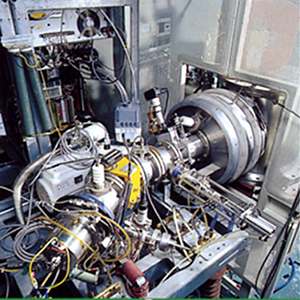
The Research Center for Electron Photon Science at Tohoku University and Clean Planet Inc. established a Condensed Matter Nuclear Reaction Division on April.1 2015. "Condensed Matter Nuclear Reaction" means ultra-low-energy nuclear reaction observed in a condensed matter arising from "Cold Fusion". First published in 1989, research in this field has been going on under various names, such as "Nuclear Reaction in Solid," and "Low Energy Nuclear Reaction (LENR)". Condensed Matter means a solid or liquid state where atoms and electrons are highly condensed. CMNR refers to the nuclear reaction phenomenon in the state of condensed atoms and electrons. Although research on this exists in many countries, the phenomena cannot yet be explained theoretically. Through our new joint division, research and development will be performed to obtain basic data of the phenomena with the eventual aim of finding a theoretical explanation. If the phenomena is proved to be due to an unknown nuclear reaction, it will over throw traditional nuclear theory. The joint research division will carry out the following research and development for at least four years.
- Fundamental Research on Condensed Matter Nuclear Reaction (CMNR)
- Development of a New Energy Generation Method
- Development of a New Nuclear Waste Decontamination Method

